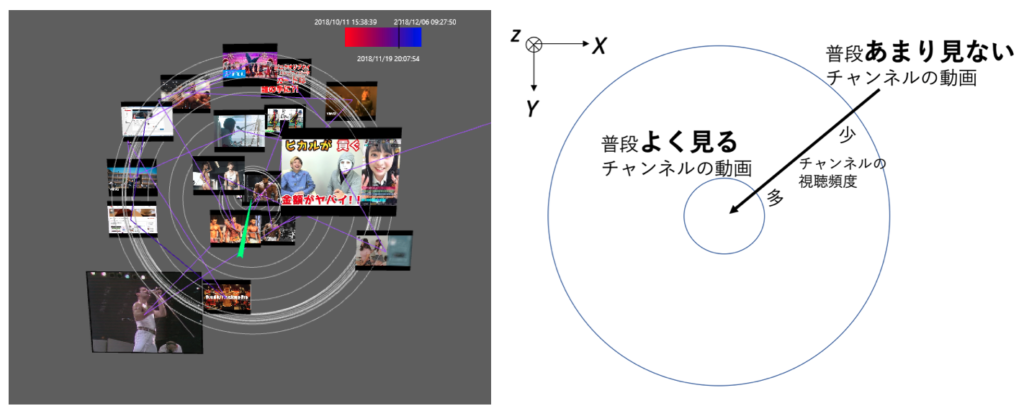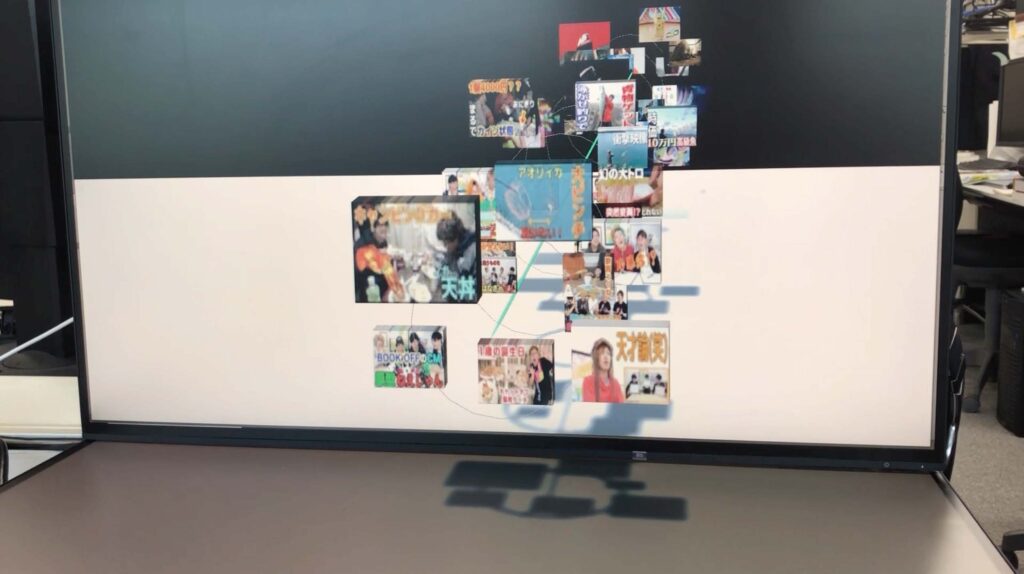Summary
rewind is a visual exploration system that enables users to reflect on and share their own web video viewing experiences of long time.
Background
Keeping mementos, creating pictures, diaries and other autobiographical representations of experiences are important practices for preserving precious memories.

Today a large variety of tools support digital capture of different aspects of people’s lives. However, the temptation to capture as much as possible results in vast collections scattered over disparate sources. Nevertheless, Thudt et al.[1] discussed visualizing digital capture of aspects of our life for self-reflection and self-representation. They proposed the creation of a visual memento from lifelog data as a new application area for visualization. They outlined the purposes and design challenges of craeating visual mementos and developed a system called visits, on which users can load their personal GPS movement data and build their own visual mementos.
Speaking of lifelog data, there are many kinds such as heart race, the number of steps a day, locacation we visted and so on. Among them, there is a web video viewing history. Now that we watch videos online so regularly, it can be argued that online video consumption is already one of the notable aspects of our lives. It is no longer rare that a video we have watched on the Internet leaves a strong impression on us and significantly influences us in some way. Therefore, online video viewing history is a promising target for the attempt at creating visual mementos from personal digital histories.
rewind
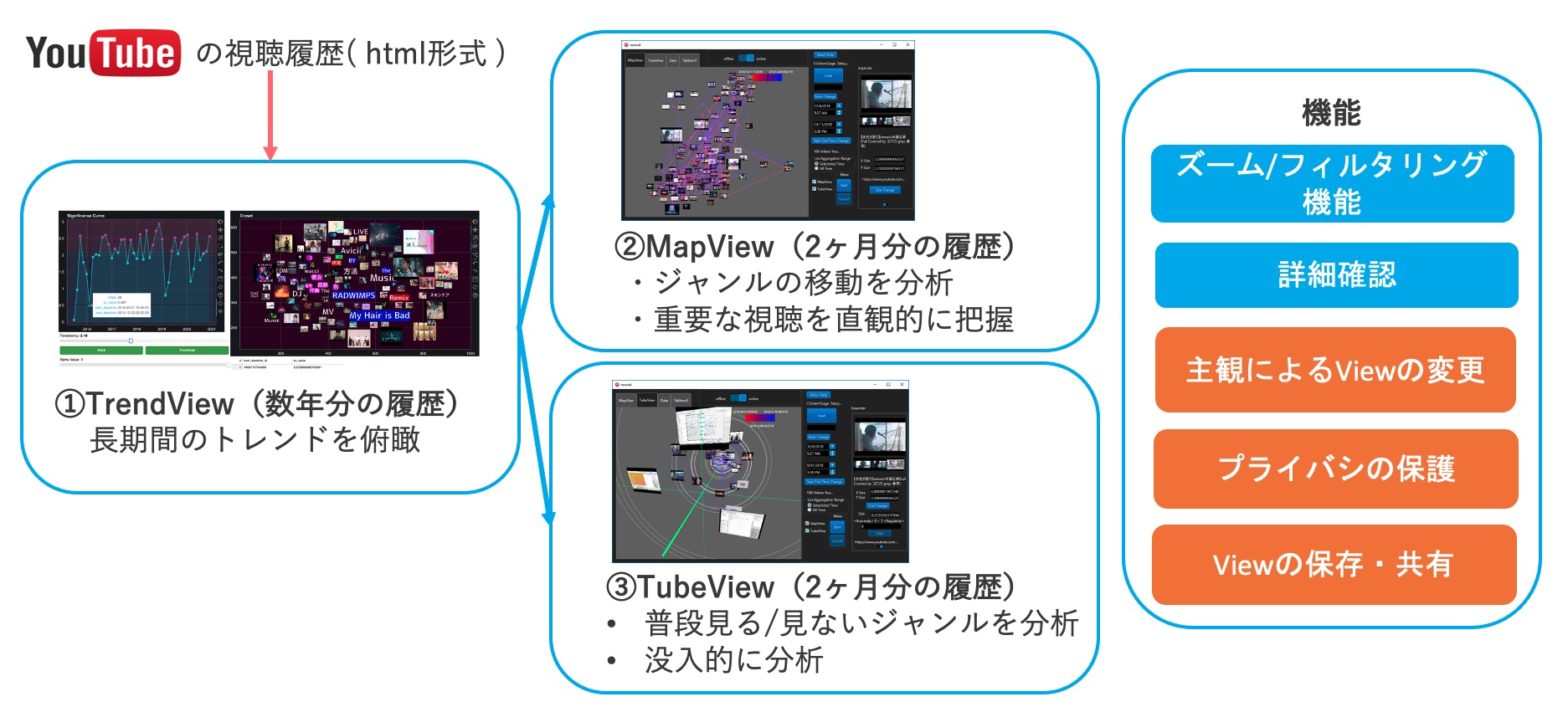
We are developing a system named rewind, through which users can create visual mementos of their web video viewing experiences to reminisce about and share. The system rewind provides two kinds of visualizations: MapView (2D) and TubeView (3D), both of which are intended to visualize the YouTube video viewing history of a single user by giving plausible meanings to the size and position of thumbnails and directed links between them.
TrendView
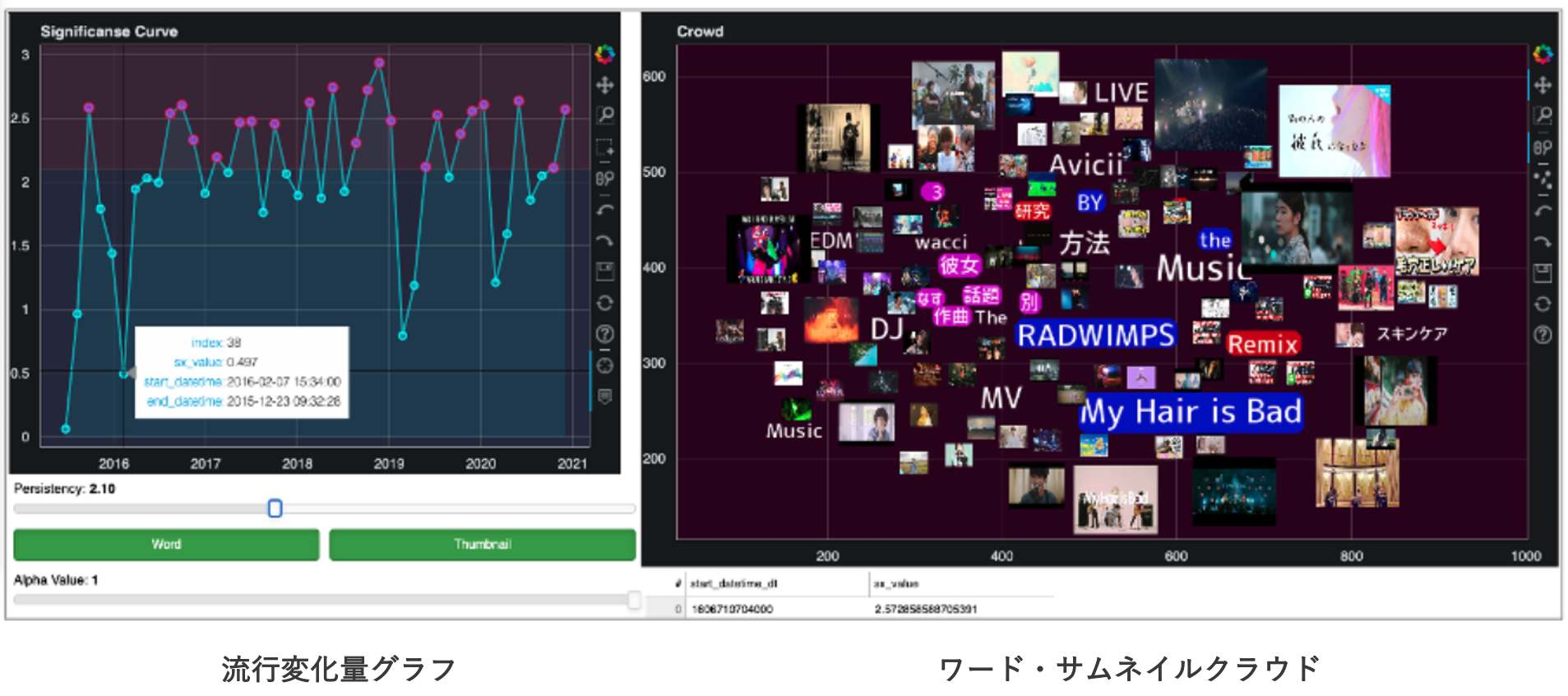
TrendView は数年に渡る膨大な視聴履歴の全体像を俯瞰することを目的としたもので,「流行変化量グラフ」と「ワード・サムネイルクラウド」の二つからなります.前者は数年間の自らの関心の変化の度合いを,後者は選択した時間窓での主要な興味関心の俯瞰を可能にします.ユーザは,流行変化量グラフを見て興味のある時間窓を見つけ,その時間窓でのトレンドをワード・サムネイルクラウドで確認することを繰り返し,膨大な視聴履歴の全体像を把握します.流行の変化量は,隣接する時間窓のワード・サムネイルクラウドの条件付きエントロピーで計算されます.
MapView
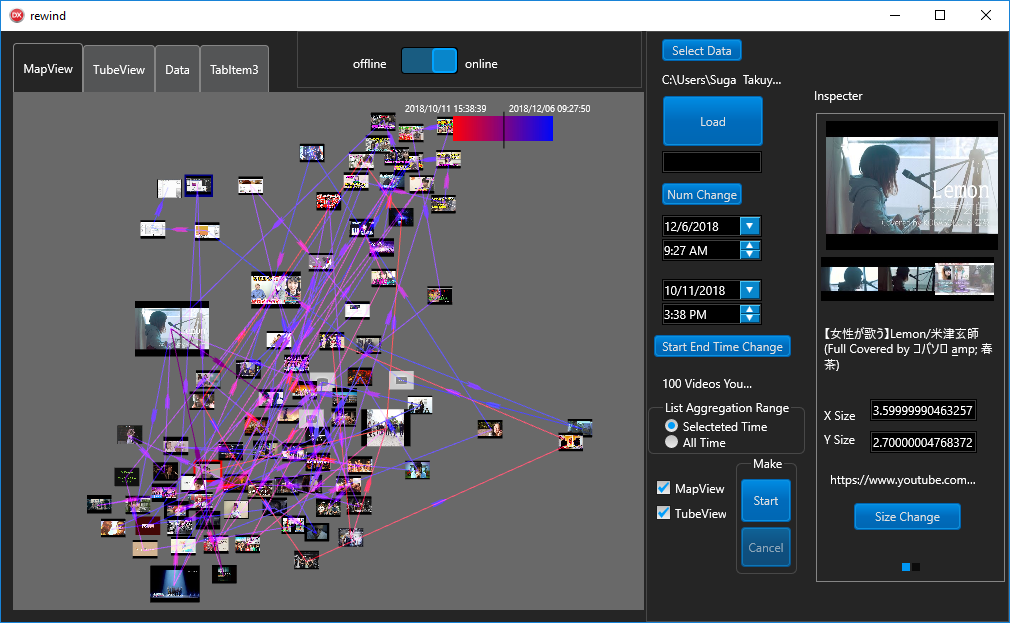
Figure 3 is a screenshot of MapView, which focuses on reminding users of their temporal changes of interest by drawing the movement in a video content map. In MapView, the position of a thumbnail is determined by the similarity of the content of videos. Videos with more similar content are located closer to one another. This design choice is based on the concept of proximity from Gestalt Principles, which suggests that similar content should come close to each other. The content similarity of is analyzed using the Microsoft Computer Vision API, Latent Dirichlet Allocation (LDA), and t-Distributed Stochastic Neighbor Embedding (t-SNE).
TubeView
Figure 4 is a screenshot of TubeView. Thumbnails of videos of channels that the users watch frequently are put near the depth axis, and those of channels that they do not watch regularly are placed far from the depth axis, as shown in Figure 5. As with MapView, the larger the number of viewings becomes, the bigger the thumbnail becomes. In TubeView, moving into the back turns back the users’ clock. Thumbnails are placed according to their viewing date. This is our common way of grasping the past: past events are away from our current standing position. Thumbnails of videos are connected with color-coded directed links in a similar way as in MapView. The users can move the camera freely along the time direction just by scrolling the mouse.
Designs for creating visual mementos
Thudt et al. [1] argued that expression of subjectivity by changing the mapping result is necessary for the creation of visual mementos. In rewind, users can change the relative size and position of a thumbnail freely to bring the representation closer to their subjective impression and personal interpretation of the past, as shown in Figure 7. Users further can eliminate the thumbnails they prefer not to share. They can save the changed view in the original format, to share it with others as their visual memento.
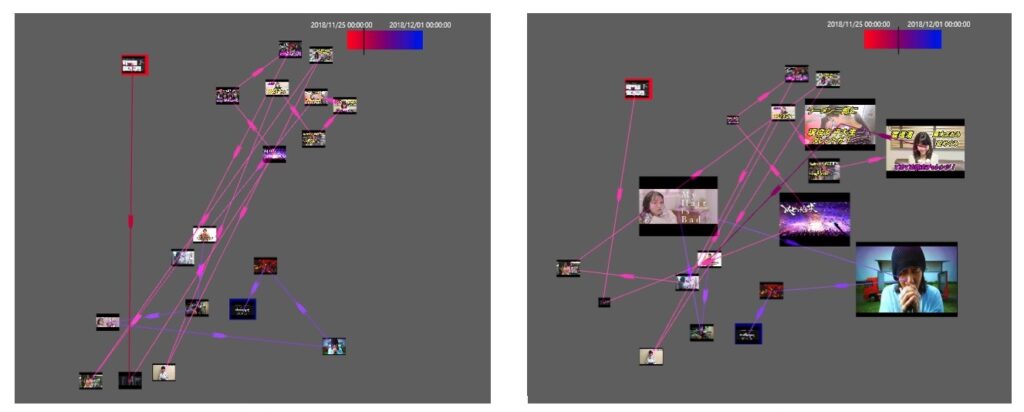
Applying immersive analytics
In order to enhance rewind’s capability for supporting users’ self-reflection, we constructed an immersive analytics environment with the 3D stereoscopic display of TubeView.
References
[1] Alice Thudt, Dominikus Baur, Samuel Huron, and Sheelagh Carpendale. Visual Mementos: Reflecting Memories with Personal Data. IEEETransactions on Visualization and Computer Graphics, Vol. 22, No. 1, pp. 369―378, January 2016.
Members
The members with a gray background do not involve in the project now. The icon ![]() is put beside the name of the members who belong to Fujishiro Laboratory now.
is put beside the name of the members who belong to Fujishiro Laboratory now.
| Name | Affiliation | Web site |
|---|---|---|
| Keio University | ||
| Keio University | ||
| Genki Nagasawa | Keio University |
Video
Publications
International presentations
- Takuya Suga, Genki Nagasawa, Masanori Nakayama, Issei Fujishiro: “rewind: Visual exploration of web video viewing history for self-reflection,” in Proceedings of the Second Leipzig Symposium on Visualization in Applications (LEVIA19), Leipzig University, November 13―14, 2019, [doi: 10.31219/osf.io/f7dk9]
Domestic presentations
- Takuya Suga, Masanori Nakayama, Issei Fujishiro: “rewind: Visualization of web video viewing history for self-reflection,” Visual Computing 2019 (Poster), Waseda University, June 27―29, 2019 (in Japanese).
- Takuya Suga, Masanori Nakayama, Issei Fujishiro: “rewind: Visualization of web video viewing history for self-reflection,” in Proceedings of the 81th National Convention of International Processing Society of Japan, Vol. 4, pp. 125―126 (4ZC-08), Fukuoka University Nanakuma Campus, Fukuoka, March 14―16, 2019 (in Japanese).
 Student Encouragement Award
Student Encouragement Award - Takuya Suga, Masanori Nakayama, Issei Fujishiro: “rewind: Visualization of web video viewing history for self-reflection,” in The Technical Report of the Institute of Image Information and Television Engineers, Vol. 43, No.9, pp. 131―134, Waseda University, March 12, 2019 (in Japanese).
Grants
 Grant-in-Aid for Challenging Research (Pioneering) : 19H05576 (2019―)
Grant-in-Aid for Challenging Research (Pioneering) : 19H05576 (2019―)- Microsoft Research Asia CORE14

